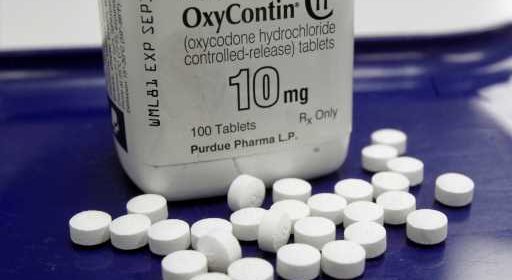Here’s how Colorado plans to distribute $400 million in opioid settlement funds

Colorado Attorney General Phil Weiser on Thursday unveiled a framework with local leaders from across the state for distributing more than $400 million in settlement funds from the nation’s largest drug companies to address the deadly opioid epidemic.
The memorandum of understanding between Weiser and local Colorado officials comes a month after the attorney general announced that Colorado would receive $300 million as part of a $26 billion multi-state settlement with drug giants AmerisourceBergen, Cardinal Health, McKesson and Johnson & Johnson.
That money, coupled with $100 million from previous settlements with Purdue Pharma and other drugmakers, will be distributed across the state to add detox centers, treatment facilities and drug abatement programs.
“Our commitment today is towards healing, towards helping communities across our state do better and treat this disorder,” Weiser said during a morning news conference.
Sixty percent of the money will be spread across 19 regions throughout Colorado, where regional collaboratives will have their own governing boards, comprised of local public officials, to assess their needs.
The remaining dollars will go to local governments (20%), the attorney general’s office (10%) and for infrastructure (10%) to help build facilities for treatment and recovery services.
The funds will be especially important for rural Colorado.
Byron Pelton, a Logan County commissioner, said his 10-county region on the Eastern Plains has one mental health center. For someone who needs help in Yuma, he said, the nearest detox facility is in Greeley, more than 120 miles away.
“We do not have the adequate resources or services needed to fight substance abuse disorders,” he said Thursday. “This money from this settlement will go a long way to help rural Colorado. This money is key to bring families back together by reuniting children with their parents and helping to heal our communities who desperately need help.”
This agreement was 18 months in the making, Weiser said, and has little precedent in Colorado.
It stands in stark contrast to the way money was distributed from tobacco companies in 1998, when billions of dollars flowed into state legislative coffers, rather than local jurisdictions for treatment purposes, said Denver City Attorney Kristin Bronson.
Denver has far more treatment and substance use resources than rural Colorado counties, she said, but that only means more people are flooding into the city to get help.
“We’ve taken on the problem for the entire region,” she said.
Over the last 20 years, more than 7,600 Coloradans died from accidental opioid overdoses, state data shows.
While the vast majority of states have signed on to this settlement, at least six have not yet agreed to the deal, Reuters reported Tuesday.
In addition to the $26 billion in settlement money, under the deal, Johnson & Johnson would not produce any opioids for at least a decade, and would stop lobbying activities related to opioids.
In addition, AmerisourceBergen, Cardinal Health and McKesson would have to share prescribing information under a new system intended to stop the avalanches of pills that arrived in some regions about a decade ago.
An Associated Press tally found there have been at least $40 billion in completed or proposed settlements, penalties and fines between governments and the makers of opioids since 2007, not including one between the federal government and OxyContin maker Purdue Pharma in which most of the $8.3 billion would be waived.
Purdue is trying to reach a deal through bankruptcy court that could be worth $10 billion over time.
Opioids — including both prescription drugs and illegal ones like heroin and illicitly produced fentanyl — have been linked to more than 500,000 deaths in the U.S. since 2000. The number of cases reached a record high of 93,000 in 2020.
The Associated Press contributed to this report.
Source: Read Full Article